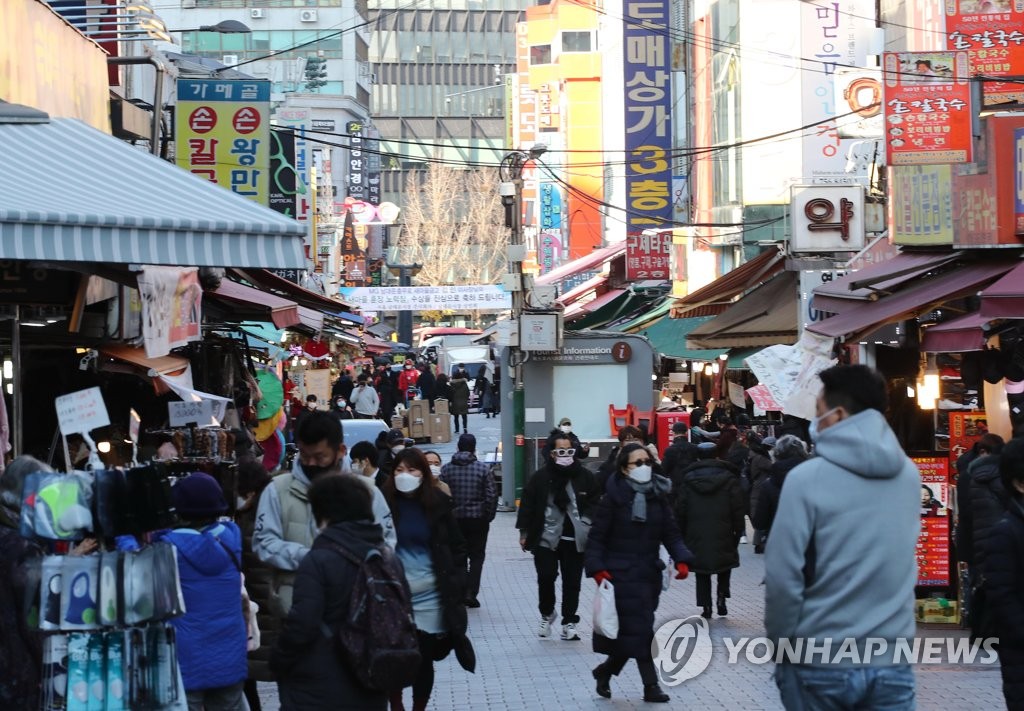Manufacturing production decreased in 3 months… “Semiconductor growth slowed down”
Retail sales increase in the second month… “Increase in sales of home appliances due to cold weather”
Government “Slightly sluggish industrial activity…continuous coronavirus uncertainty”

[연합뉴스 자료사진]
(Sejong = Yonhap News) Park Yong-ju, Chae-yeon Chae-yeon, Su-yeon Su-yeon, Kwak Min-seo, reporter = January’s industrial production declined from the previous month in eight months.
The accumulation of production growth so far served as a base effect, and the increase in distance to prevent the third spread of the novel coronavirus infection (Corona 19) hit the service industry.
However, as sales of durable goods such as home appliances increased, consumption increased the most in five months.
◇ Manufacturing -1.7%… Electronic parts 9.4%↓ Semiconductor 0.3%↑
According to the industrial activity trend released by the National Statistical Office on the 2nd, all industrial production in January (excluding seasonal adjustment and agriculture, forestry and fishing) decreased 0.6% from the previous month.
It is the first time in eight months since May 2020 (-1.5%) that industrial production has declined. Industrial production from June (3.9%) last year to July (0.3%), August (0.1%), September (1.1%), October (0.1%), November (0.9%), December (0.4 %), but fell back in January.
Manufacturing production decreased by 1.7%, resulting in a 1.6% decrease in mining and industrial production. Electronic parts recorded -9.4% and other transportation equipment decreased by 12.4% due to the slowdown in the production of TV LCD-related items.
It was only three months that manufacturing production declined, but the base effect also worked as the increase was large in December last year (2.7%). Manufacturing production, which was negative compared to the previous month, increased 7.4% compared to the previous year.
As exports continued, semiconductors (0.3%) also increased from a month ago, but the increase fell from December (11.6%). Semiconductor sales increased by 19.6% compared to the same period last year.
“Semiconductors were the main factor in the growth of mining and industrial production in December of last year, but semiconductor growth slowed down in January,” said Unseon, an expert on economic trend statistics at Statistics Korea. “This influence also lowered manufacturing production from a month ago.”
The service industry’s production declined 0.2%, continuing its decline for two consecutive months following the previous month (-1.1%), but the decline decreased. Finance and insurance (1.3%) and information and communication (0.7%) increased, but arts, sports and leisure (-15.4%), wholesale and retail (-0.8%) decreased.
![[그래픽] Industrial activity trend increase or decrease](https://i0.wp.com/img6.yna.co.kr/etc/graphic/YH/2021/03/02/GYH2021030200020004400_P4.jpg?w=560&ssl=1)
(Seoul = Yonhap News) Reporter Park Young-seok = [email protected]
◇ Consumption increased by 1.6%↑ for two consecutive months
Retail sales, showing consumption trends, rose 1.6%. This is the second month’s increase following last December (0.1%). The increase is the largest since August 2020 (3.0%).
Non-durable goods such as pharmaceuticals (-0.1%) decreased from a month ago, but sales of durable goods such as home appliances (4.8%) and semi-durable goods such as clothing (1.0%) increased. The increase in consumer electronics consumption was cited as the main background of the increased indoor life and winter cold waves caused by Corona 19.
Facility investment increased by 6.2%. Transportation equipment such as automobiles (-8.4%) decreased, but investment in machinery such as special industrial machinery (11.2%) increased.
The actual construction period that construction companies actually constructed fell 6.0%.
Deputy Eh explained, “Amid the continued re-proliferation of coronas, production in the service industry declined, and production in the mining industry was somewhat contracted due to the base effect last month, but consumption increased due to the increase in sales of home appliances due to the cold wave.”
The cyclical fluctuation of the coincident index, which represents the current economy, fell 0.2 points from the previous month, halting the upward trend that continued for 7 consecutive months until December.
On the other hand, the cyclical fluctuation of the leading index, which predicts the future economy, rose 0.3 points, continuing the upward trend for eight consecutive months. It is the longest increase since it rose for 12 consecutive months from February 2009 to January 2010.
The government has maintained a prudent stance on judging the economy.
“In January, industrial activity was a temporary factor in the third spread of Corona 19, and was somewhat sluggish,” said Kim Young-hoon, head of the Ministry of Strategy and Finance. Uncertainty from tax and other factors will continue,” he predicted.

(Sejong = Yonhap News) Reporter Kim Joo-hyung = Eo Un-seon, Statistics Officer, Economic Trends Statistics Officer at the National Statistical Office, announces the industrial activity trends for January 2021 at the Sejong Government Complex in Sejong City. 2021.3.2 [email protected]
Unauthorized reproduction-redistribution prohibited
2021/03/02 09:54 sent
